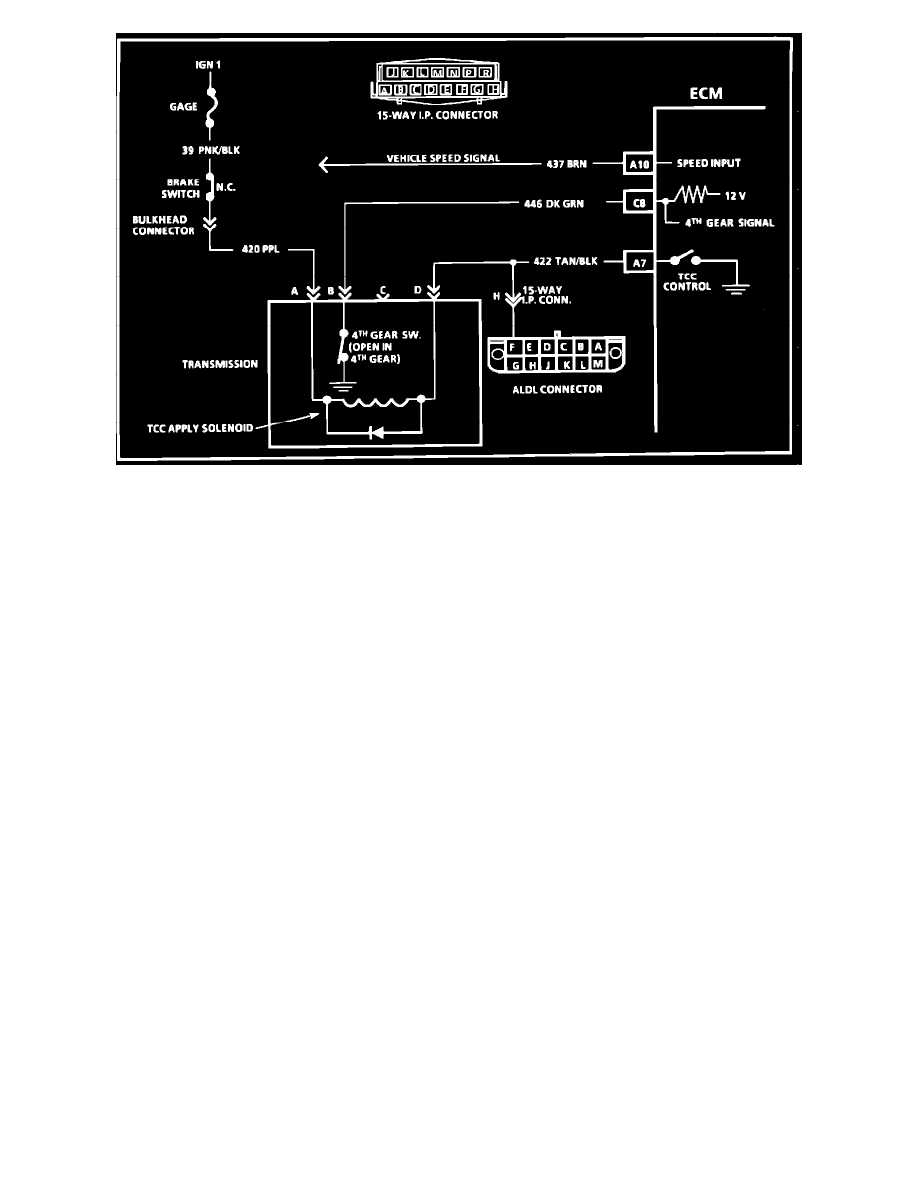Camaro V8-305 5.0L VIN E TBI (1989)

Chart C-8A Wiring Diagram
CIRCUIT DESCRIPTION:
The purpose of the torque converter clutch feature is to eliminate the power loss of the torque converter when the vehicle is in a cruise condition. This
allows the convenience of the automatic and the fuel economy of a manual transaxle. The heart of the system is a solenoid located inside the transaxle
which is controlled by the ECM.
When the solenoid coil is activated ("ON"), the torque converter clutch is applied which results in straight through mechanical coupling from the engine
to the wheels. When the transaxle (TCC) solenoid is deactivated, the torque converter clutch is released which allows the torque converter to operate in
the conventional manner (fluid coupling between engine and transaxle).
The ECM turns "ON" the TCC when coolant temperature is above 65~C (149~F), TPS not changing, and vehicle speed above a specified value.
TEST DESCRIPTION: Numbers below refer to circled numbers on the diagnostic chart.
1.
When a test light is connected from ALDL terminal "F" to ground, a test light "ON" indicates battery voltage is OK and the TCC solenoid is
disengaged.
2.
When the diagnostic terminal is grounded, the ECM should energize the TCC solenoid and the test light should go out.
DIAGNOSTIC AIDS:
The "Scan" tool only indicates when the ECM has turned "ON" the TCC driver and this does not confirm that the TCC has engaged. To determine if
TCC is functioning properly, road test the vehicle. Engine rpm should decrease when the "Scan" indicates the TCC driver has turned "ON." To
determine if the 4th gear switch is functioning properly, perform the checks in CHART C-8A PART 2 OF 2. The switches will not prevent TCC lock
and unlock points. If the 4th gear switch circuit is always open, the TCC may engage as soon as sufficient oil pressure is reached.
Part 2 of 2
